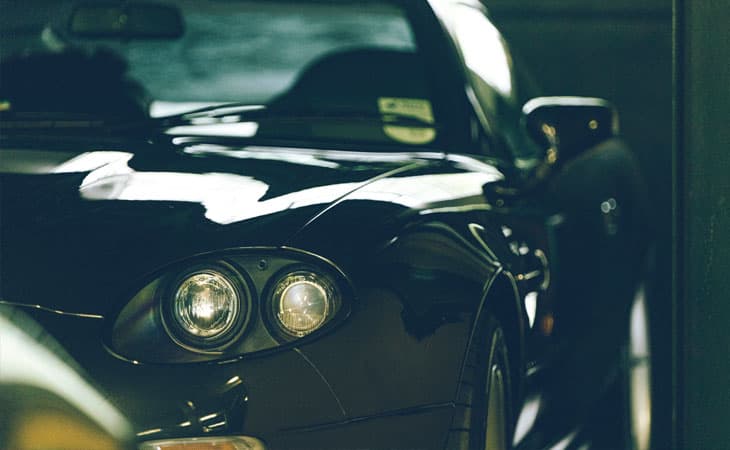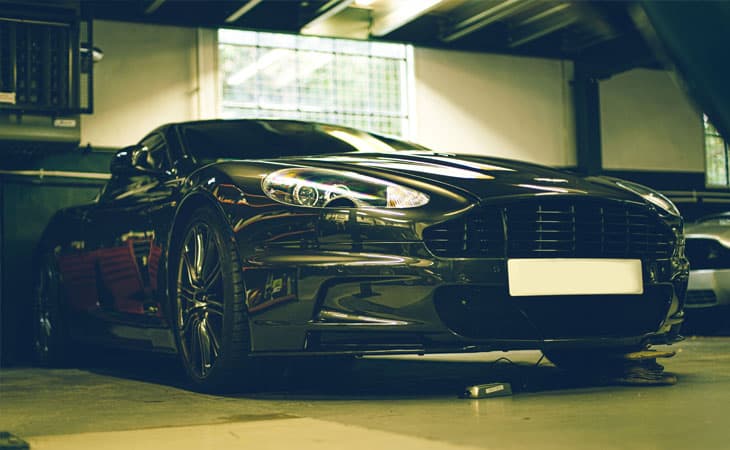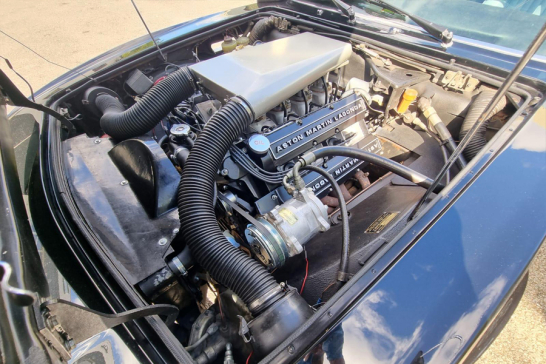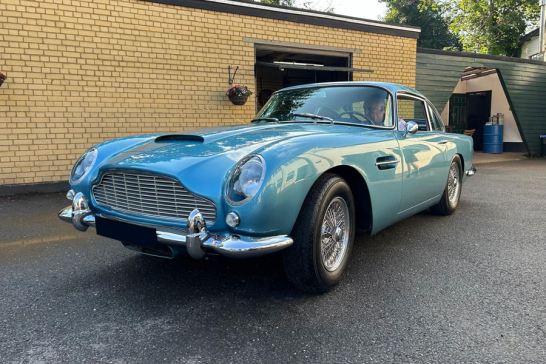From Minor Imperfections to Blistering and Corrosion We've Got it Covered
Serious paint and bodywork issues tend to be the preserve of older - classic - Aston Martins that have spent a long time in damp garages or poorly-insulated barns. But some of the marque’s modern cars are prone to developing minor imperfections that can diminish your overall enjoyment of the vehicle.
VH-era cars - from the 2004 DB9 through to the 2016 DB11 - are particularly prone to blistering and corrosion at the edges of the roof, the top of the doors, the rear wheel arches, door handles, boots and bonnets.
The mirror stems on many VH-era Aston Martins are also prone to blistering, and many modern Aston Martin owners struggle with so-called chip-rashes around the front of the rear wheel arches – often a consequence of small stones being flicked up and onto the bodywork.
Classic Restoration Expertise for Modern Astons
Fortunately, all of these issues are relatively easy to remedy. As seasoned Aston Martin restoration specialists who specialise in detailed repair work, we’ve developed a good working relationship with several local bodywork specialists – including blending experts who excel at restoring small blemishes in the paintwork of classic Astons.

These skills can easily be transferred to modern Aston Martins; stopping corrosion in its tracks, and restoring your car’s good looks using tried and tested techniques guaranteed to leave a smooth mirror-shine.
We’ve also got the in-house experience, and obsessive attention to detail needed to spot any minor blemishes that you’ve overlooked. When you book in to Pugsley and Lewis, you can rest assured that your car will be returned in pristine condition, with every minor scrape, scratch and blemish removed.
Why Is My Aston Martin’s Paintwork Bubbling?
It’s hard to keep a car in factory-fresh condition. This is doubly-true when the car in question is an Aston Martin that demands to be driven with a certain degree of passion and enthusiasm. But the issues affecting some modern Astons go well beyond the occasional chip or ding.
Many of the VH-era vehicles develop blistering or corrosion problems, including cars that have spent the majority of their lifespan in showrooms or well-ventilated garages. There are thought to be a two key reasons for this:
Firstly, on the wing mirrors and other areas that are exposed to a lot of environmental stress, Aston Martin is thought to have used an insufficient amount of paint. Once water has penetrated a minute scratch or pockmark, it can infiltrate into the primer underneath your paint and cause the blistering or bubbling damage most often seen in VH-era Aston Martins.
Secondly, we understand that the painting process Aston Martin used to rely on allowed for contamination that prevented paint adhering properly to some surfaces, which is why blistering and corrosion is often limited to specific areas of bodywork.

The good news is that the blistering is largely cosmetic, but it does look unsightly and it can spread if it’s left untreated for a long period of time. If you’ve noticed signs of corrosion or bubbling on any part of your Aston Martin, it’s best to get in touch right away.
We’ll be able to ensure that your paintwork is treated properly – and that the problem doesn’t spread to other areas of your vehicle.
What About Non-VH Era Aston Martins?
Bubbling and corrosion is less likely on newer Aston Martins but it can still occur. It’s also important to note that daily driving will, inevitably, result in the formation of tiny bumps and scratches that can affect the overall appearance of your vehicle.
In particular, many Aston Martin drivers notice a small rash on or around the front of the rear wheel arches; normally caused by small stones being flicked up onto the paintwork while driving.
A Paint and Bodywork Specialist You Can Trust
The techniques used to remedy serious blemishes can also be used to remove minor scuffs, scratches and scrapes so don’t hesitate to get in touch regarding any cosmetic issues. Whatever the problem, your Aston will be in safe hands.



